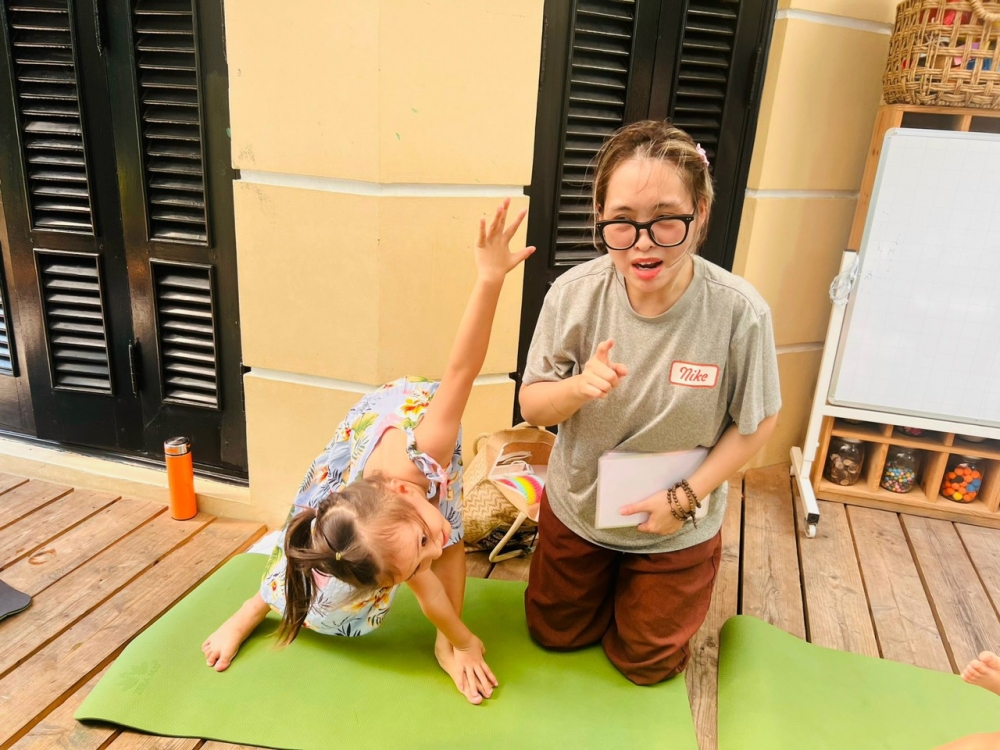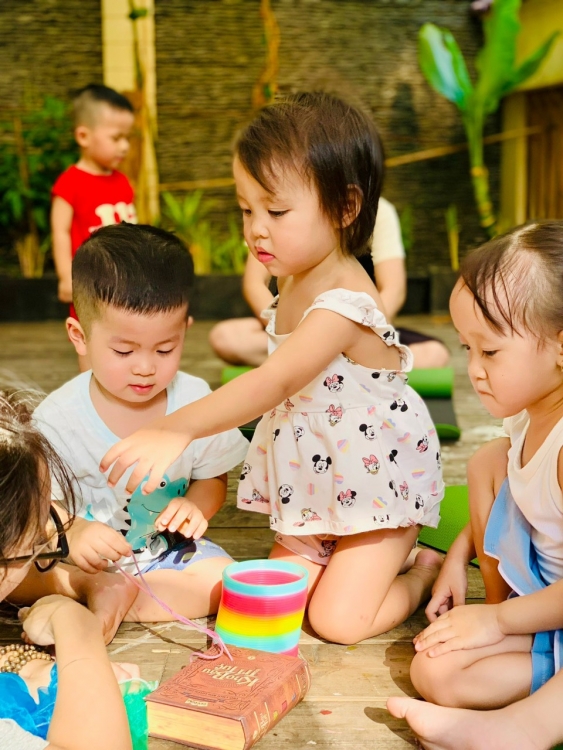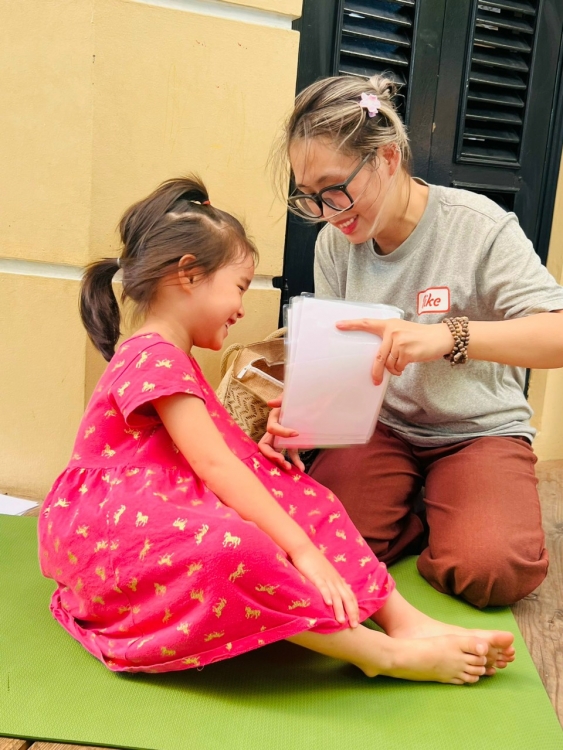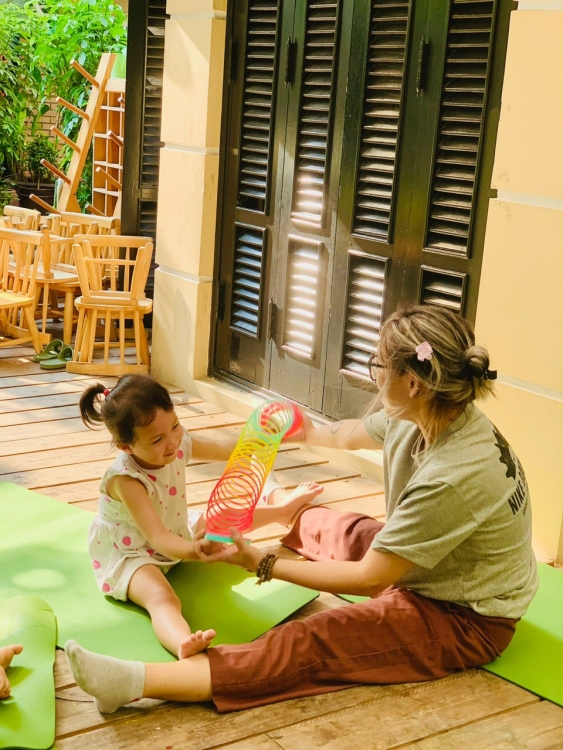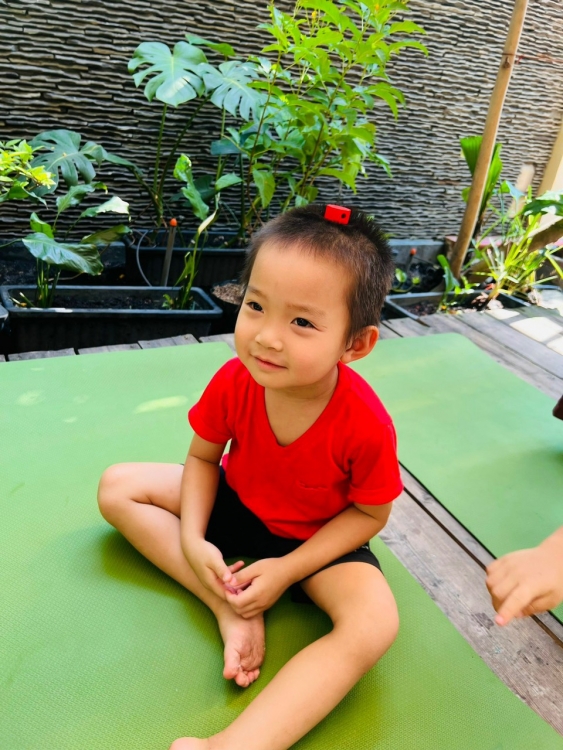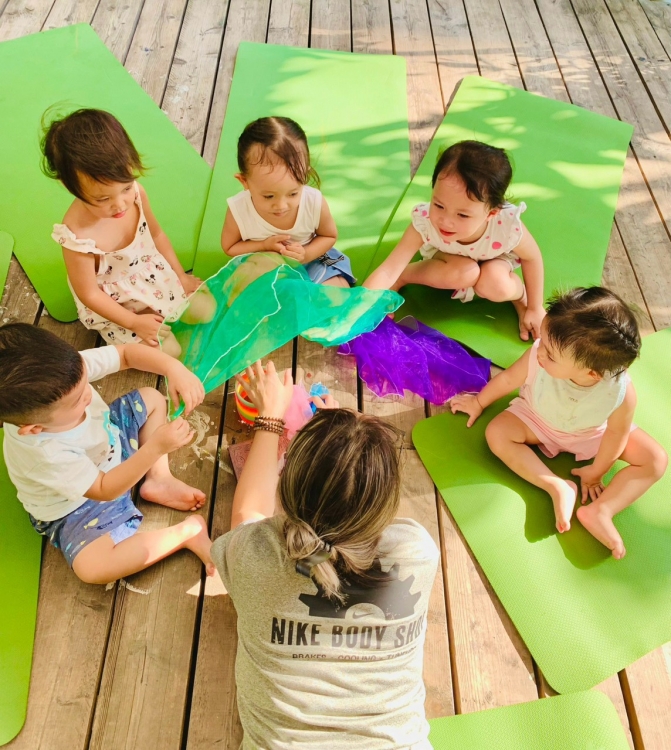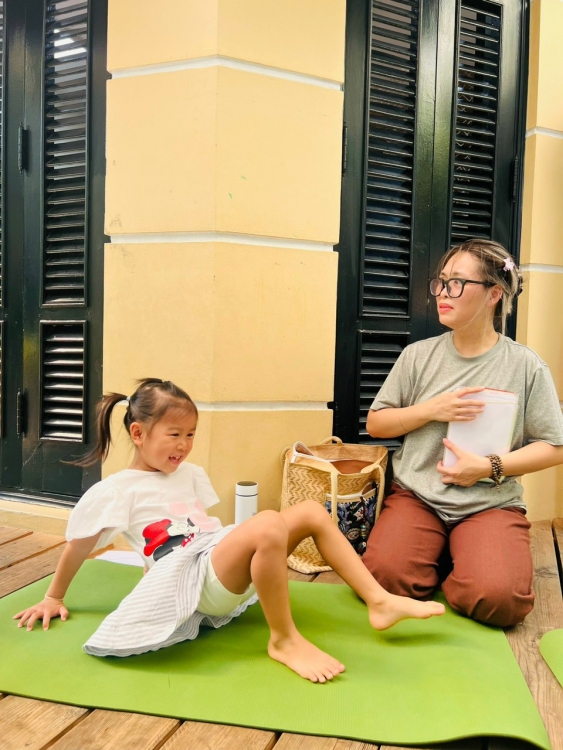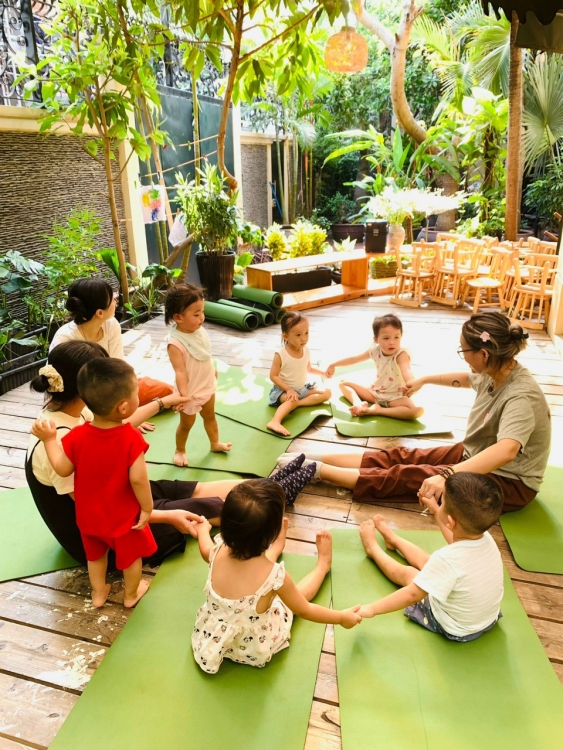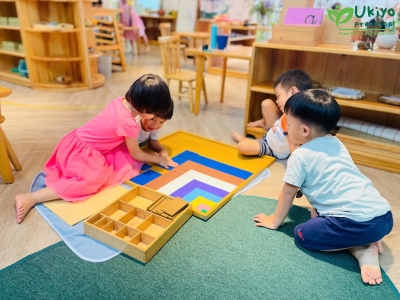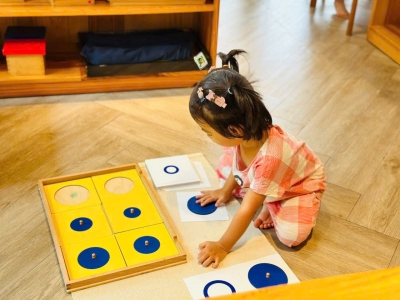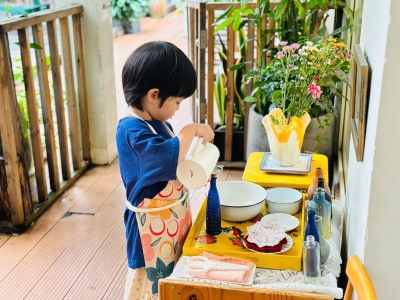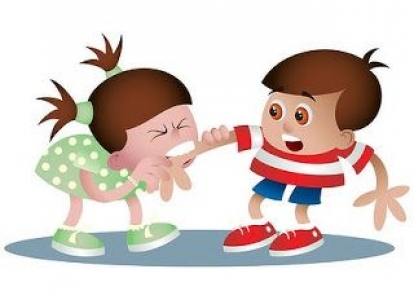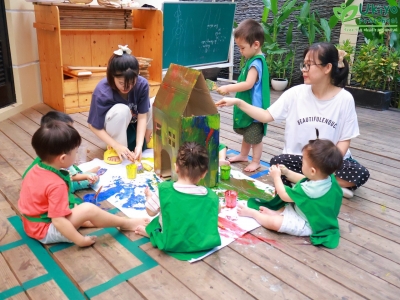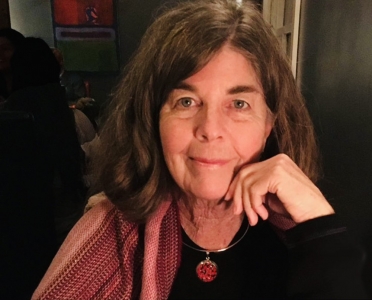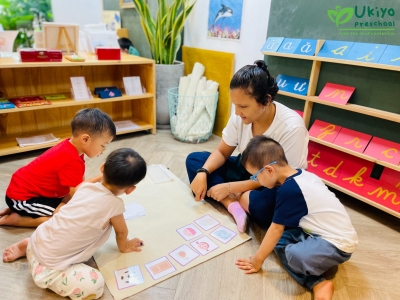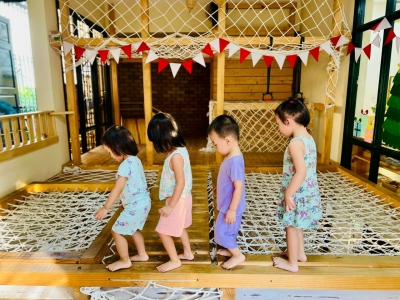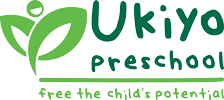THE STORY OF A YOGA PROGRAM FOR PRESCHOOLERS FROM THE PERSPECTIVE OF A YOGA TEACHER AT UKIYO
WHAT MAKES KIDS YOGA AT UKIYO DIFFERENT!
Last month, during a class, I asked the kids, "Which sense do you think is the most important?" and a flurry of opinions erupted.
Gạo said, "Eyes, because SEEING is crucial; without sight, you're doomed!" Then the others covered their eyes and lay down on the mat. Ms. Linh tickled them, and they laughed with their eyes still closed. See, you can still laugh without seeing.
Moon said, "The nose for SMELLING, without it you can't eat, and you'd die." So, the kids played a game where they closed their eyes, couldn't SMELL, and TASTED yogurt candies. They enjoyed guessing whether it was banana-flavored or strawberry-flavored candy.
What if you couldn't HEAR? They then covered their ears and looked around, giggling. Still fun, right?
Gấu said, "Hands to TOUCH, teacher." Exactly, humans have five senses: "sight-hearing-smell-taste-touch." If one of these senses is "absent," you can still play well. But try holding your breath... oh dear, the kids dramatically pretended to faint and collapse on the mat. So they understood how important BREATHING is.
Ron said, "I don't need to breathe through my nose," then stuck out his tongue and panted. Ms. Linh laughed, "That's right, Ron, you can breathe through your nose, mouth, belly, and when you're really tired, I even breathe through my ears. (At this point, the whole class burst into laughter.) But that's when you're super tired, normally I practice to keep my breath strong."
A strong breath means a healthy body.
We have many types of breaths to stay healthy:
- Calm breath
- Strong breath
- Breath when tired
- Balanced breath
- Morning breath
- Cosmic breath (Kaori excitedly said, "Wow, even cosmic breath!")
Yes, it's the breath that carries the sound of the Universe, let's try it together.
Then the whole class sat upright, placed their rounded hands on their knees, and breathed Aum (the Om sound that Ms. Linh called cosmic breath). Long... short... Aum sounds echoed, and to produce those sounds, the kids had to inhale deeply and exhale slowly.
Practicing breathing with kids is so fun, isn't it?
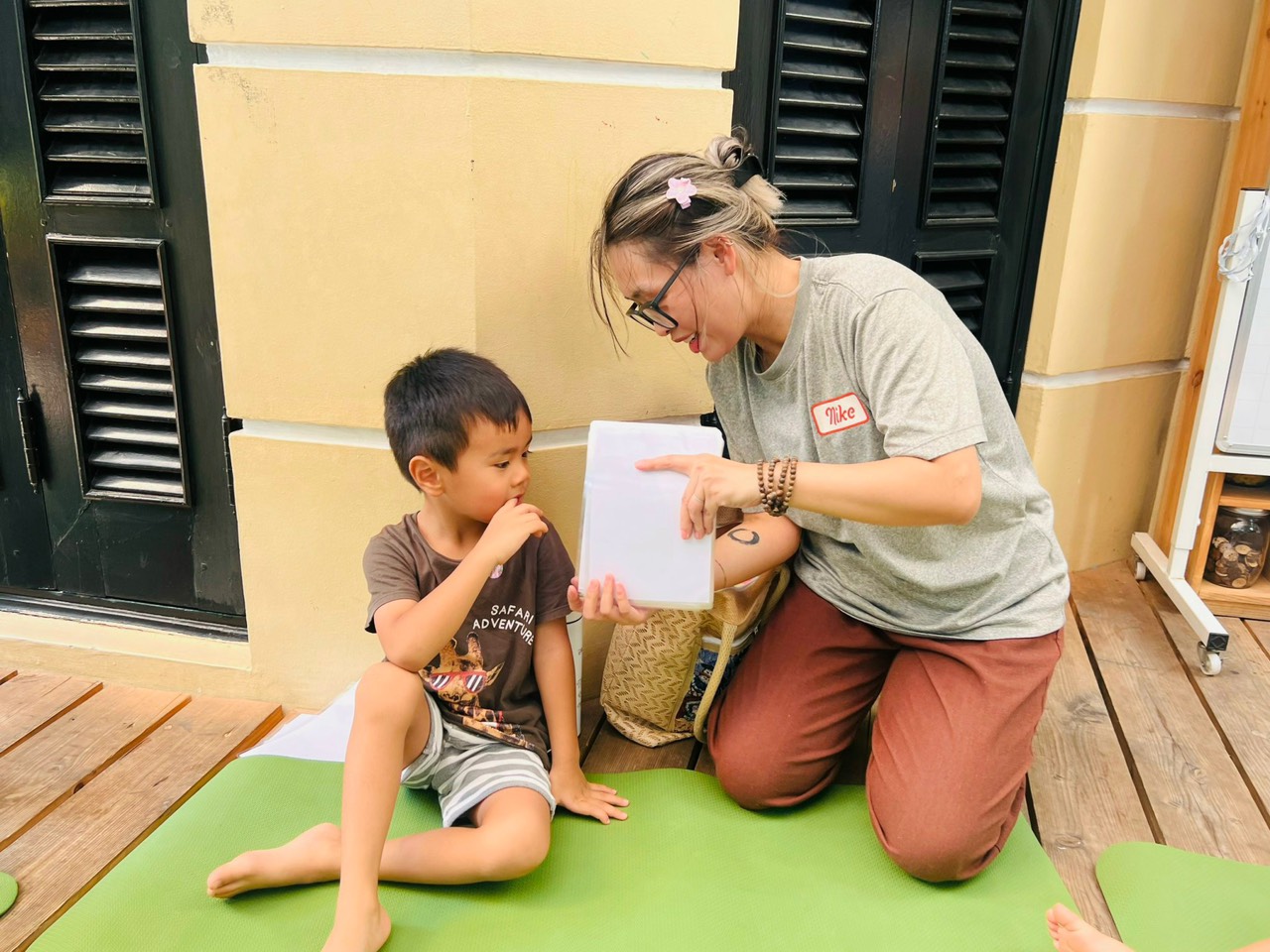
Dear Parents and Preschool Yoga Teachers
Ms. Linh is writing these lines to give adults a realistic view of preschool yoga. This is one of Ms. Linh's typical sessions for children aged 3-6, a time when they are eagerly exploring the world and becoming more aware of their bodies.
As you know, a standard yoga session always includes three main elements: yoga poses (asana), breathing (pranayama), and sensory awareness (mindfulness). These elements make yoga distinct from other sports.
So, can preschoolers incorporate these elements? Or is yoga for preschoolers just like other physical activities?
Ms. Linh confidently asserts that preschoolers can absolutely integrate all three elements, and perhaps even more perfectly, because young children have a better ability to perceive than us adults.
- First, Let's Talk About Yoga Poses (Asana)
When it comes to movement, kids are incredibly flexible. A child’s body at birth has nearly 300 bones, some of which are cartilage and connective tissues. As they grow, these cartilages harden into bones, some of which fuse together, leading to an adult count of 206 bones. This is why children are more flexible and pliable than us adults. Therefore, in yoga class, Ms. Linh doesn't insist that children perform each pose perfectly. Instead, she focuses on safety—how they place their hands, feet, lift their hips, and stomach—allowing them to perform the poses within their own comfort and strength levels.
Stretching poses are limited (since children are already very flexible), and if practiced, the children are reminded to relax after each difficult pose. For example, after backbending poses like the ladybug or bird's nest, they will follow up with "restorative" poses such as child's pose, rolling egg, or turtle shell.
- Next is BREATHING
Incorporating breathing with yoga poses can be more challenging for children than for adults. Ms. Linh can't simply instruct, "Take a deep breath," with every pose they practice. Instead, she uses games like "blowing clouds away" when the children are in flying bird pose, or "blowing the egg along the path" when they are in sliding penguin pose.
There are also specific breathing exercises, such as the cosmic breath mentioned earlier, which are highly effective for children.
- Finally, Sensory Awareness (Mindfulness)
Or as Ms. Linh likes to call it, sensory play. This is a strong suit for children in yoga, as parents and teachers know—no one plays better than children. No one can break a child's focus when they are deeply engaged in play. It's a form of play meditation that is naturally strong in every child. These fun games help children focus on their senses, enhancing their body awareness and their ability to connect and listen to one another. Examples include the "guess the sound" game or the "who's missing" game.
So, sometimes you might see the children moving in circles on the mat, sometimes practicing in pairs, sometimes lying in a corner hugging their mats, wrapped in a blanket, or gently holding a wooden block and mumbling something... That’s when they are practicing yoga, that’s when they are exploring their creativity within the world of yoga.
.jpg)
Yoga is connection—not just with oneself but with everything around. Yoga for children brings not only physical benefits but also increases positive energy from within. These results can sometimes be invisible, sometimes visible through the joy in a child's eyes, through the enthusiastic and natural "namaste" greetings, through the transformation from shyness to confidence when mastering a new pose, and through those adorable facial expressions: frowns, pouts, giggles, wide eyes, tongue sticking out, and toothy grins.
Ms. Linh believes that when a child expresses their emotions, that is when they have a healthy spirit. When they gleam with joy after overcoming a challenge or even just trying to participate, they show courage and a wonderful will. All these beautiful aspects fortify Ms. Linh's belief in bringing yoga to her young students.
Thank you, parents and teachers, for trusting and choosing yoga as an essential practice for the children.
Namaste.
Photos
Others



